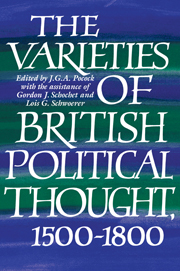Book contents
4 - The Puritan Revolution: a historiographical essay
Published online by Cambridge University Press: 04 August 2010
Summary
How the purer spirit is united to this clod is a knot too hard for fallen humanity to untie. How should a thought be united to a marble-statue or a sunbeam to a lump of clay!
(Joseph Glanvill)Glanvill's question must touch a sensitive nerve in all who write about the English Revolution of the mid seventeenth century. There was a time when it seemed as if the momentous, if not enduring, changes introduced in those years – the regicide, the collapse of censorship, the removal of bishops and lords, the establishment of a republic – could be referred in a direct way to the ideological conflicts of preceding generations. This is not an easy position to sustain in the light of recent research, with its emphasis on the agreements of aim between crown and parliament, the falseness of ‘court’ and ‘country’ polarities, and the conservatism of English puritans. It has now become easier to explain why the Civil War should never have happened than why it did.
But perhaps this recent research is wrong? If we look at the problem in microcosm – in the career of the puritan revolutionary, William Prynne – we can at once see that revisionism has indeed come up with the right answers to the question whether there is ‘a high road to Civil War’ but to no other. Prynne saw no conflict in aims between king and parliament (that is to say right up to a year before he was writing the officially commissioned Civil War case for parliament against king).
- Type
- Chapter
- Information
- The Varieties of British Political Thought, 1500–1800 , pp. 119 - 145Publisher: Cambridge University PressPrint publication year: 1994

